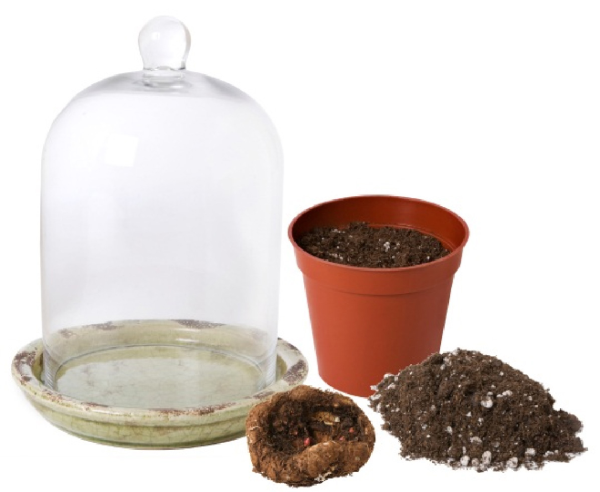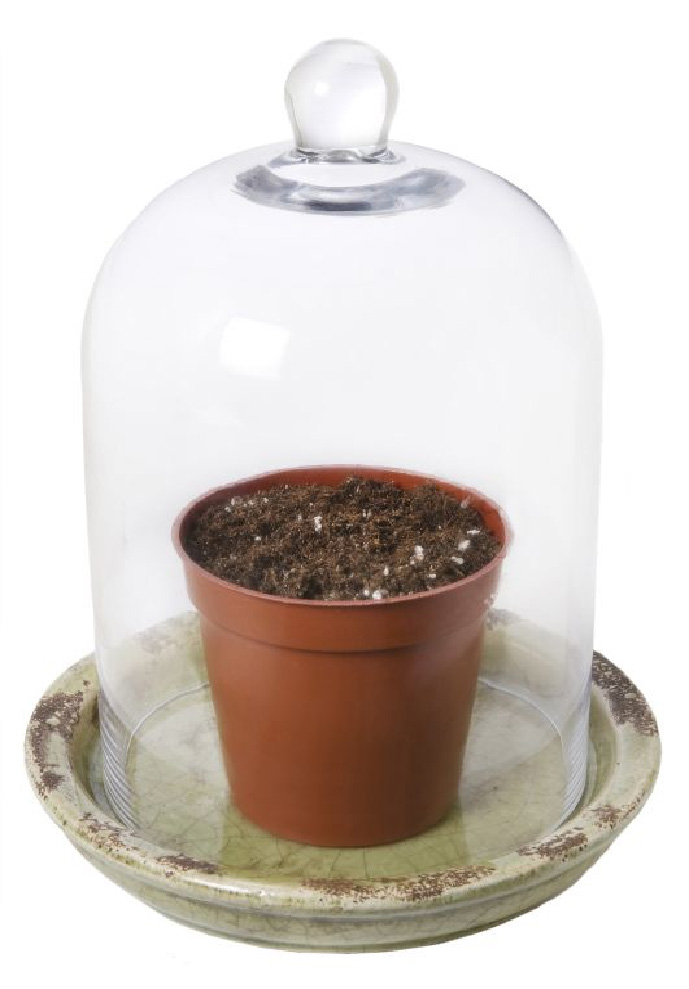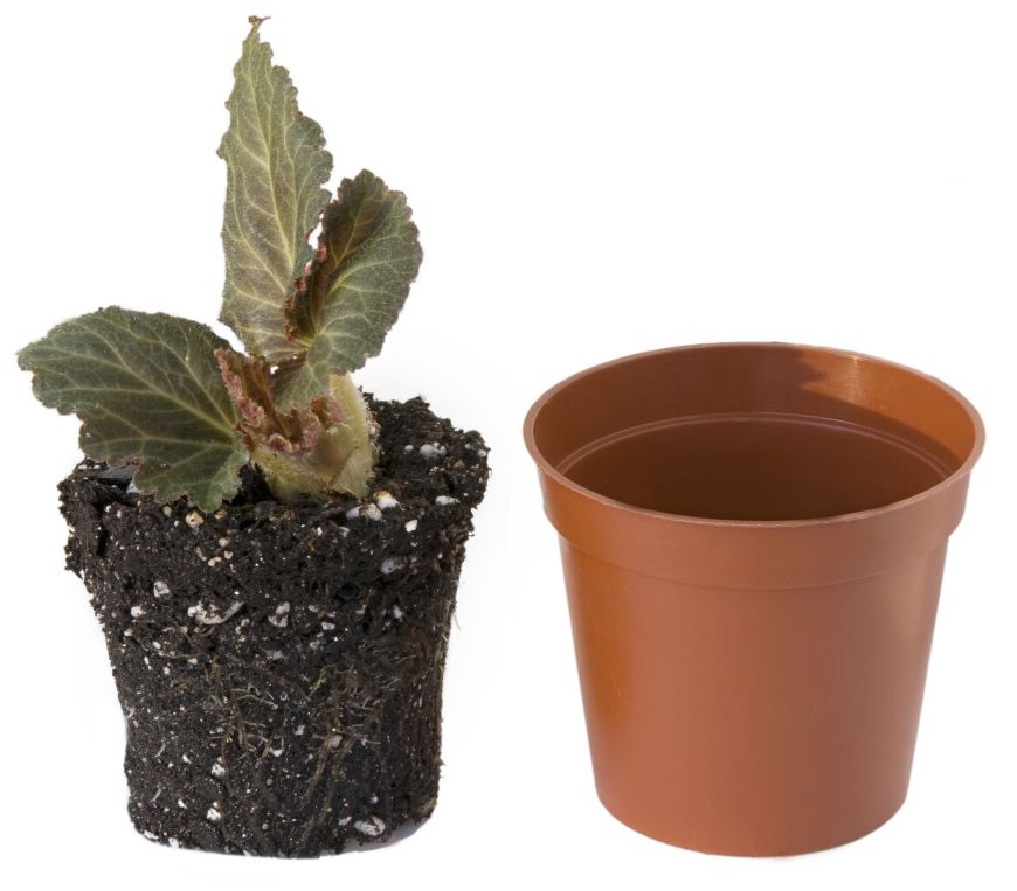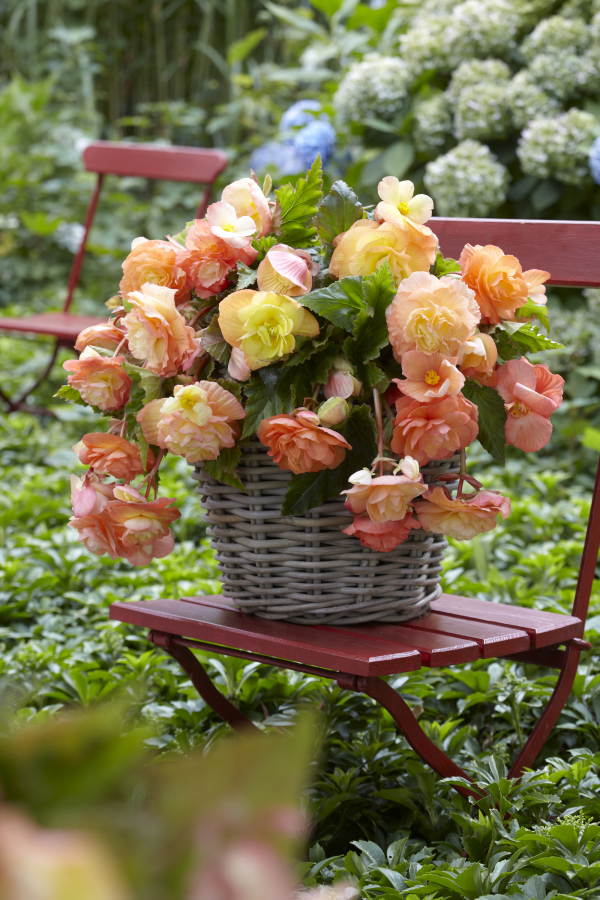Using a Terrarium to Start Tuberous Begonias
Terrariums are the latest trend in home décor, but did you know that you can use them to get a jump start on your garden? Terrariums can act as a countertop greenhouse for growing tuberous begonias. Spring is right around the corner, and this easy project is one you’ll be able to enjoy all summer long!
STEP 1: PLANTING MATERIALS
 Pictured above is everything you will need for your terrarium project.
Pictured above is everything you will need for your terrarium project.
• Begonia tubers
• Growing mix
• A small 3-4″ diameter pot
• Terrarrium Lid
• Dish for the base
STEP 2: PLANTING

This is what your assembled terrarium will look like
Fill about 2/3 of the pot with the potting soil. Place one begonia tuber on the soil surface, with the hollow side up. Cover it with about 1/2″ of growing mix.
Place the terrarium lid over the potted begonia. Water sparingly until growth begins, the terrarium will act as a greenhouse, retaining warmth and moisture and helping the begonia grow. Place in a bright, warm location in your home. Even though begonias are shade plants, when they are getting started they appreciate more light. You’ll probably want to avoid south-facing windows, as temperatures inside terrarium cover could get too hot.
 The progression of growth is shown here.
The progression of growth is shown here.
Depending on the temperature of your home (best temps for starting begonias are 70-75°F), you will see sprouts in about two weeks. This can vary, so just be patient. Water when the soil is dry to the touch.
When your begonia is about the size of the photo on the right, it is time to remove the terrarium. This may take up to 6 weeks.
STEP 3: TRANSPLANT AND ENJOY!

Once your begonia looks like the one above, you can transplant it into a larger container. Simply lift it out and place it in a new pot, adding additional growing mix as needed. If you want to give your begonia a little boost, you can add some slow release fertilizer granules, or fertilize with all purpose liquid fertilizer once a month. If you have used several terrariums and have multiple begonias to plant, you can plant them together in a larger container,keeping the tubers about 8″ apart.
When any danger of frost has passed, you can move your begonias outside. Choose a part shade location that doesn’t get any hot, midday sun. Morning or late afternoon sun is best. Water when the soil is dry to the touch and be sure to check more often during dry, hot weather. Removing spent blooms and wilted leaves will encourage your begonia to bloom longer and prolong its beauty.

To see our complete selection of tuberous begonias, click HERE.

